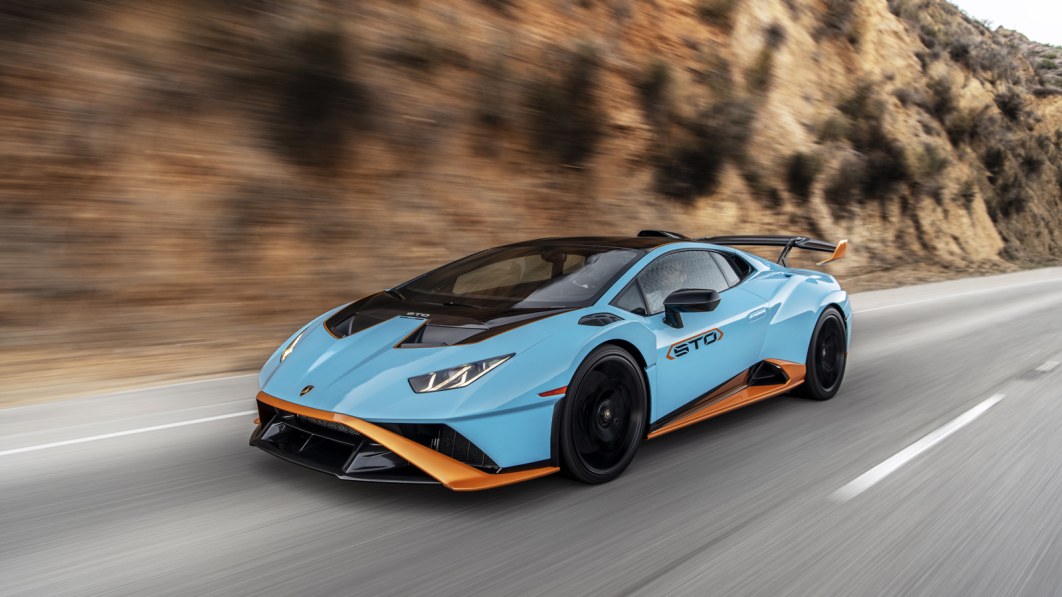Lamborghini wants to grow, but it will never become big

Lamborghini had a record year in 2021: it delivered 8,405 cars, an increase of 13% over 2020 and, tellingly, 6,803 units more than in 2011. Almost all of the company’s production capacity for 2022 is spoken for, so its popularity doesn’t look like it’s going to wane anytime soon. Andrea Baldi, the head of the Americas region for Lamborghini, sat down with Autoblog to talk about what this growth means for the future.
“We have more than a year-long waiting time for every model. Even for the Huracán, which we launched in 2014. It’s not just the STO; it’s the all- and rear-wheel-drive variants as well. We pre-sold the Aventador Ultimae in three weeks in July 2021, which was a record,” Baldi pointed out. The more family-focused Urus has been hugely popular as well; it’s the best-selling Lamborghini with 5,021 deliveries in 2021.
Lamborghini plans to continue growing in the coming years, it will notably unveil four new models in 2022, but there’s a set limit to how far it can stretch. The executive team’s idea is not to rival Audi in terms of size, or even Porsche.
“We definitely want to scale up our production a bit. The big chance for us is the jump into hybridization, because it means that we’ll get a new generation of cars. We’ll start in 2023 with the Aventador’s successor, and the entire range will gradually be electrified after that. This gives us an opportunity for the Aventador and Huracán successors to have a production line that can make more cars,” Baldi revealed.
He stopped short of telling us precisely how many more, but the increase will be relatively small — and maintaining the brand’s exclusivity will be of paramount importance. “The idea will always be to have one car less than demand,” he noted. “We will always have a waiting time but it should be shorter, so we need a little more production capacity. If you sit in front of your house and watch 10,000 cars go by, one will be a Lamborghini. We’re talking about a small-digit percentage increase, but for a luxury brand it will be a big change,” Baldi added.
Going hybrid unlocks other opportunities, like the ability to reach new buyers while letting the firm stay on the right side of ever-stricter regulations. And yet, many of its customers still associate a super-sports car with a mighty internal combustion engine. “In general, there is a very common factor among all customers: if you ask them what is a super-sports car today, they will answer it’s one with an internal combustion engine,” pointing out that younger customers are also increasingly interested in what the future holds in terms of electrification.
Sure, an electric motor delivers instant torque and quick acceleration, but many of Lamborghini’s customers — and many enthusiasts in general — are fascinated by engines. “It’s like comparing a digital watch to a mechanical watch. There is an undeniable desire to maintain this kind of complication in a luxury super-sports car rather than going with something that simplifies this technology too much.” Regulators care little about the intricacies of a naturally-aspirated V12, so what’s next? Lamborghini has already said that it’s looking at ways to keep the internal combustion alive beyond 2030, and synthetic fuels (like the one sister company Porsche is developing) could make this possible. “We are interested and we are following the conversation very closely,” said Baldi, though he stressed that it’s too early to make a decision.
It goes without saying that the Urus deserves a tremendous amount of credit for Lamborghini’s recent delivery records, but its effect on the brand goes beyond sales figures. Unveiled in 2017, it took the company into a segment that it had never truly been present in — the LM002 was a completely different beast that was built in very limited numbers. In turn, launching a more family-friendly model made Lamborghini more approachable. “Lamborghini had a great potential that wasn’t expressed completely. The brand was known at an incredible level but we couldn’t really transform this into sales. Now, 70% of Urus buyers are new to the brand and some then decide to buy a super-sports car.”
On the other end of the Lamborghini spectrum, limited-production models have been surprisingly popular. The born-again Countach was sold out before it was unveiled to the public, and about a third of the production run is going to America. Some buyers even said “I’ll take one!” before they saw the car in person. While the Urus is a volume model, at least from Sant’Agata Bolognese’s perspective, Baldi and his team are not planning on diluting the company’s image to chase sales figures. “We will never become unexclusive. That is a promise,” he summed up.
Related Video:



